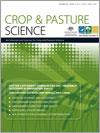In the modern era, agriculture must seek to be environmentally sustainable, an obligation now considered as a social contract. This demands that its activities do no significant harm, where the natural resources sustaining it are fully safeguarded, but of necessity in the context of profitable agriculture. The requirement to minimise the environmental impact of the necessary agrochemicals and pesticides in waterways is especially demanding. In the past 20 years, the Australian cotton industry has approached this obligation in various ways, needing extensive planning, learning from past experiences, but it can be legitimately claimed, with significant success. This success has been achieved at some cost, requiring large numbers of personnel, time and resources. This review aims to document the strategies that have been employed, how these required effective research management and how the research data generated was applied. To the extent that this complex program of participatory action has succeeded, while also acknowledging some dramatic failures, other areas of agriculture can also benefit by identification of the key factors contributing to success.
How to translate text using browser tools
18 December 2013
Research and practice: environmental action for improving water quality in cotton catchments since 1990
I. R. Kennedy,
M. T. Rose,
A. Crossan,
M. Burns
ACCESS THE FULL ARTICLE

Crop and Pasture Science
Vol. 64 • No. 12
Dec 2013
Vol. 64 • No. 12
Dec 2013
Diuron
ELISAs
Endosulfan
environmental risk assessment
environmental stewardship
gin trash
GM cotton




